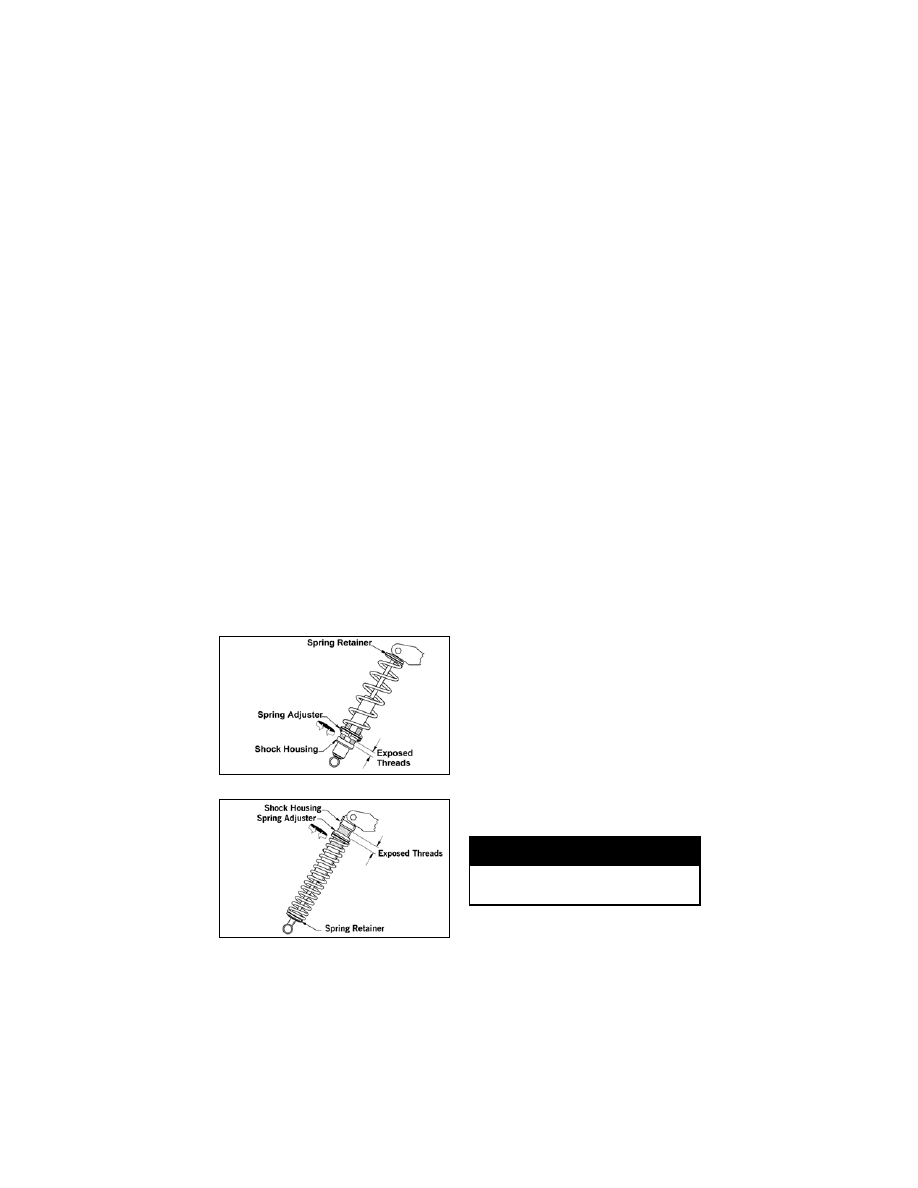Snowmobile Arctic Cat (2006 year). Instruction - part 18

68
MAINTENANCE
The front shock springs are individ-
ually adjustable for the terrain con-
ditions and driving style of the
operator. The spring adjuster has
been set at the factory so the correct
amount of threads are exposed
between the spring adjuster and the
shock housing as an initial setting.
Additional ski pressure can be
obtained by tightening the spring
t e n s i o n ; s k i p r e s s u r e c a n b e
decreased by relaxing spring ten-
sion.
N OT E : E q u a l a d j u s t m e n t s
should be maintained on both
sides of the snowmobile.
To adjust spring tension, rotate the
entire spring in whichever direction
is desired. If after adjusting spring
tension you note the snowmobile
front end wants to pitch, relax the
spring tension on the side that is
pitching. If both sides are pitching,
relax the spring tension on both
sides.
NOTE: The spring adjuster will
normally rotate with the spring.
734-501B
734-500B
Adjusting Front Shocks (Fox Air
Shocks)
NOTE: It is recommended to
monitor the air pressure in the air
shocks once every month.
NOTE: Adjusting air shocks
may be done by the snowmobile
owner if qualified to do so. If the
owner does not feel qualified,
take the snowmobile to an autho-
r i z e d A rc t i c C a t S n ow m o b i l e
dealer for this service. This ser-
v i c e i s a t t h e d i s c r e t i o n a n d
e x p e n s e o f t h e s n o w m o b i l e
owner.
The air shocks are individually
adjustable for the terrain conditions
and driving style of the operator.
The shocks are preset at 3.5 kg/cm
2
(50 psi) as an initial setting (4.2 kg/
cm
2
(60 psi) on the M-7 LE); how-
ever, it is possible to “fine tune” the
shocks to match the operator ’s
weight, riding style, and terrain con-
ditions.
NOTE: Care should be taken to
h a v e e q u a l p r e s s u r e i n t h e
s h o ck s b e fo r e o p e r a t i n g t h e
snowmobile.
To increase or decrease air pressure,
use the following procedure.
NOTE: When adjusting air pres-
sure, all weight must be removed
from the front suspension, and
the shock absorbers must be fully
extended.
NOTE: Adding air pressure will
increase the air spring force;
r e d u c i n g a i r p r e s s u r e w i l l
decrease air spring force.
1. Remove the air valve cap from
the shock.
! WARNING
Do not exceed 105 kg/cm
2
(150
psi) in the shock.